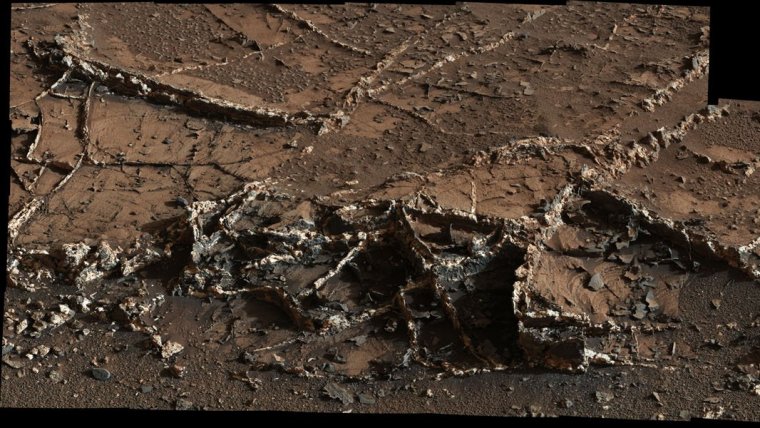| News / Space News |
Curiosity Eyes Prominent Mineral Veins on Mars
NASA | APRIL 4, 2015
Two-tone mineral veins at a site NASA's Curiosity rover has reached by climbing a layered Martian mountain offer clues about multiple episodes of fluid movement. These episodes occurred later than the wet environmental conditions that formed lake-bed deposits the rover examined at the mountain's base.

This view from the Mast Camera on NASA's Curiosity Mars rover shows a network of two-tone mineral veins at an area called "Garden City". ![]()
Curiosity has analyzed rock samples drilled from three targets lower on the mountain in the past seven months. It found a different mineral composition at each, including a silica mineral named cristobalite in the most recent sample.
These differences, together with the prominent veins seen in images taken a little farther uphill, illustrate how the layers of Mount Sharp provide a record of different stages in the evolution of the area's ancient environment.
Veins such as these form where fluids move through cracked rock and deposit minerals in the fractures, often affecting the chemistry of the rock surrounding the fractures. Curiosity has found bright veins composed of calcium sulfate at several previous locations.
Some of the sequence is understood: Mud that formed lake-bed mudstones Curiosity examined near its 2012 landing site and after reaching Mount Sharp must have dried and hardened before the fractures formed. The dark material that lines the fracture walls reflects an earlier episode of fluid flow than the white, calcium-sulfate-rich veins do, although both flows occurred after the cracks formed.
YOU MAY ALSO LIKE


